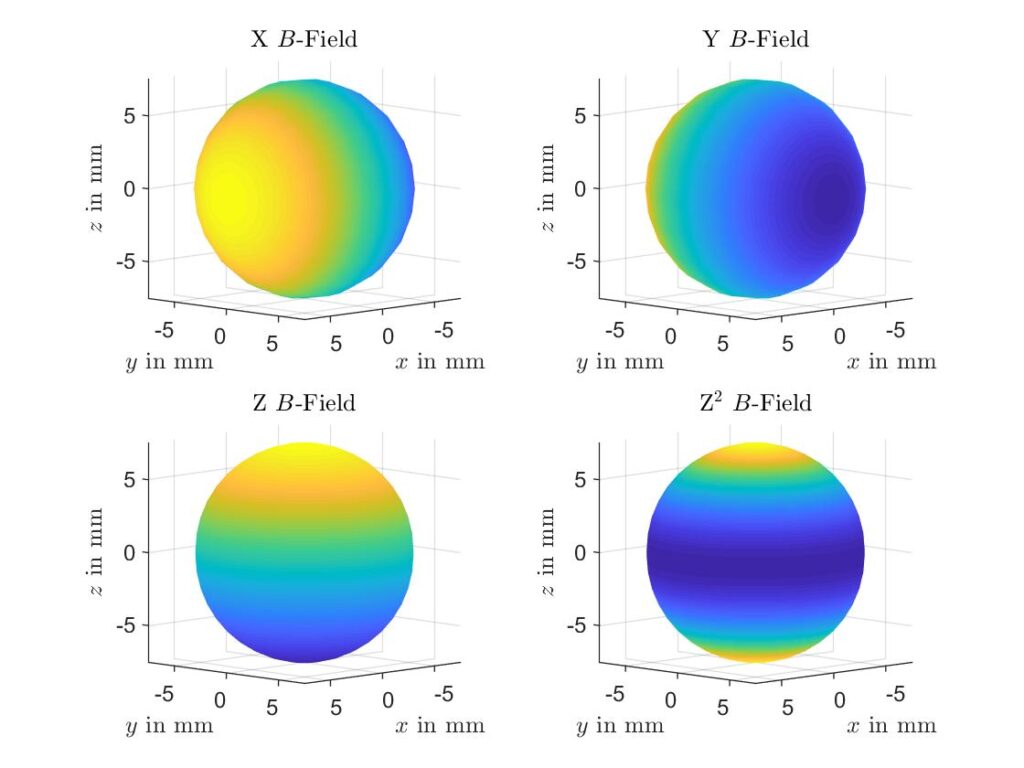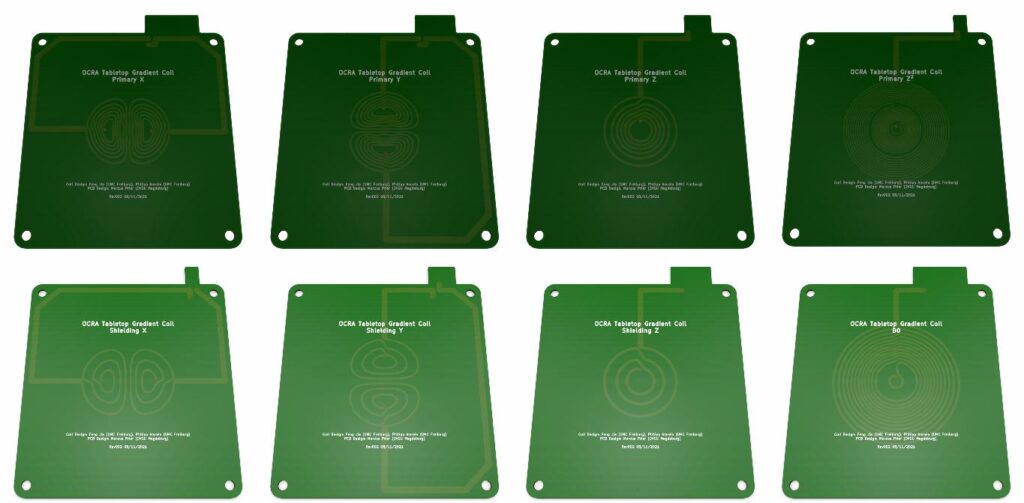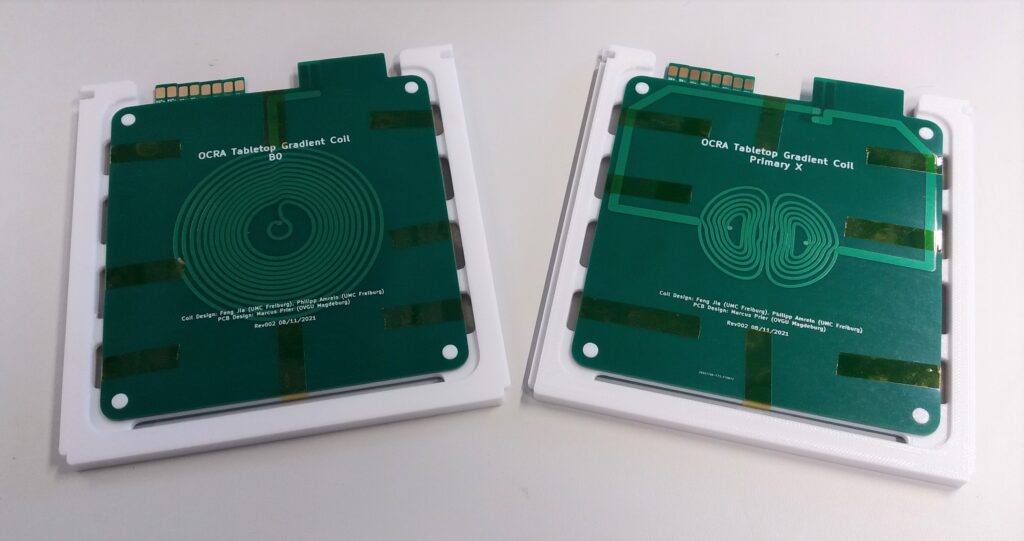Hello OCRA and Tabletop community,
In this blog post I want to share our gradient coil design for the OCRA Tabletop MRI System.
Gradients fields are necessary to encode spatial information to the spin signal. As the origin of the spin signal is the homogeneous magnetic field (B0) it is possible to variate this field to encode the spatial position of the spins. The most common method is weaken and strengthen the magnetic field in a linear manner along a spatial axis. When modulating the B0 in only axis (direction) you receive a so called projection, in two directions you get classic 2D imaging and for all 3 spatial axes you can even encode 3D and/or slice information. To generate the gradient fields, the gradient coils are driven by high power currents. This happens at a brief moment in the imaging sequence.T he currents are only provided for a short moment in the sequence, usually a few micro- to milliseconds. This is why they are called gradient pulses. As the console only provide low power voltage pulses a gradient power amplifier (GPA) is needed to transform the console signal into high power gradient current.
All linear coils also can be driven with continuous currents. This will permanently offset the B0 field in a linear way and can be used to shim the B0 field. An idle B0 field should be very homogeneous. In real live a residual inhomogeneity is normal and most of the time not avoidable, most of the time due to very small construction margins. The shim fields will weaken and strengthen the B0 field in all spatial directions till it’s even. To shim non-linear inhomogeneities additional coil I special geometry can provide non-linear fields. In our Tabletop system the B0 field I given by two disk neodymium magnets. As the fields are stronger to the distance and center of both magnets a Z² shim coil is added to lower the field close to the disks. All nominal fields are shown in image1.

The coils are planar in geometry and consist of 4 layers. There are two inner coils and two outer coils surrounding the measurement area (DSV) with its RF-coil. The inner (primary) coils will provide the fields. The outer (shielding) coils will supress the field to the outside. As the gradient fields are pulsed they induce eddy currents in surrounding conductive material. To supress eddy currents in the steel pole shoes next to the gradient coils the shielding coils will emit a field in opposite direction to the primary coils.
In addition, there is a B0 coil which allows for magnet field drift compensation. The B0 field drifts slightly due to the temperature sensitive neodymium magnets. The B0 coil can lower or raise the magnet B0 field.
The OCRA Tabletop MRI System gradient coils a 8 double-sided PCBs and should be ordered in 0.4mm thickness. The PCBs are shown in image2.

In the shared files you will find the 3D printable mounting rack and a sketch with the critical dimensions for positioning the coils. Be aware of the PCB orientations and stacking of the primary and shielding coils. The coils are flat taped to the mounting rack. This is shown in image3.

The wiring diagram is is provided in the shared files. The cables should be as short as possible to decrease electric resistance but still long enough to limit mechanical stress on the thin PCBs.
The gradient coils are simulated/designed by Feng Jia and Philipp Amrein of the UMC Freiburg. The PCB conversion and PCB design bei me (Marcus Prier, OVGU Magdeburg).
https://data.stimulate.ovgu.de/f/cdcf1ad104b04ba7babe/
When downloading the files, you declare to cite us as creator of the OCRA Tabletop gradient coils when using in your projects or publications (Marcus Prier, Forschungscampus STIMULATE, Otto-von-Guericke University Magdeburg; Feng Jia and Philipp Amrein, UMC Freiburg). You are not allowed to remove logos or references.
If you have questions about the OCRA Tabletop gradient coils or interest in preassembled coils, Tabletop and OCRA components or even a whole OCRA Tabletop MRI System contact me via marcus.prier@ovgu.de.
Best Regards
Marcus

0 thoughts on “Gradient Coils for the OCRA Tabletop MRI System”